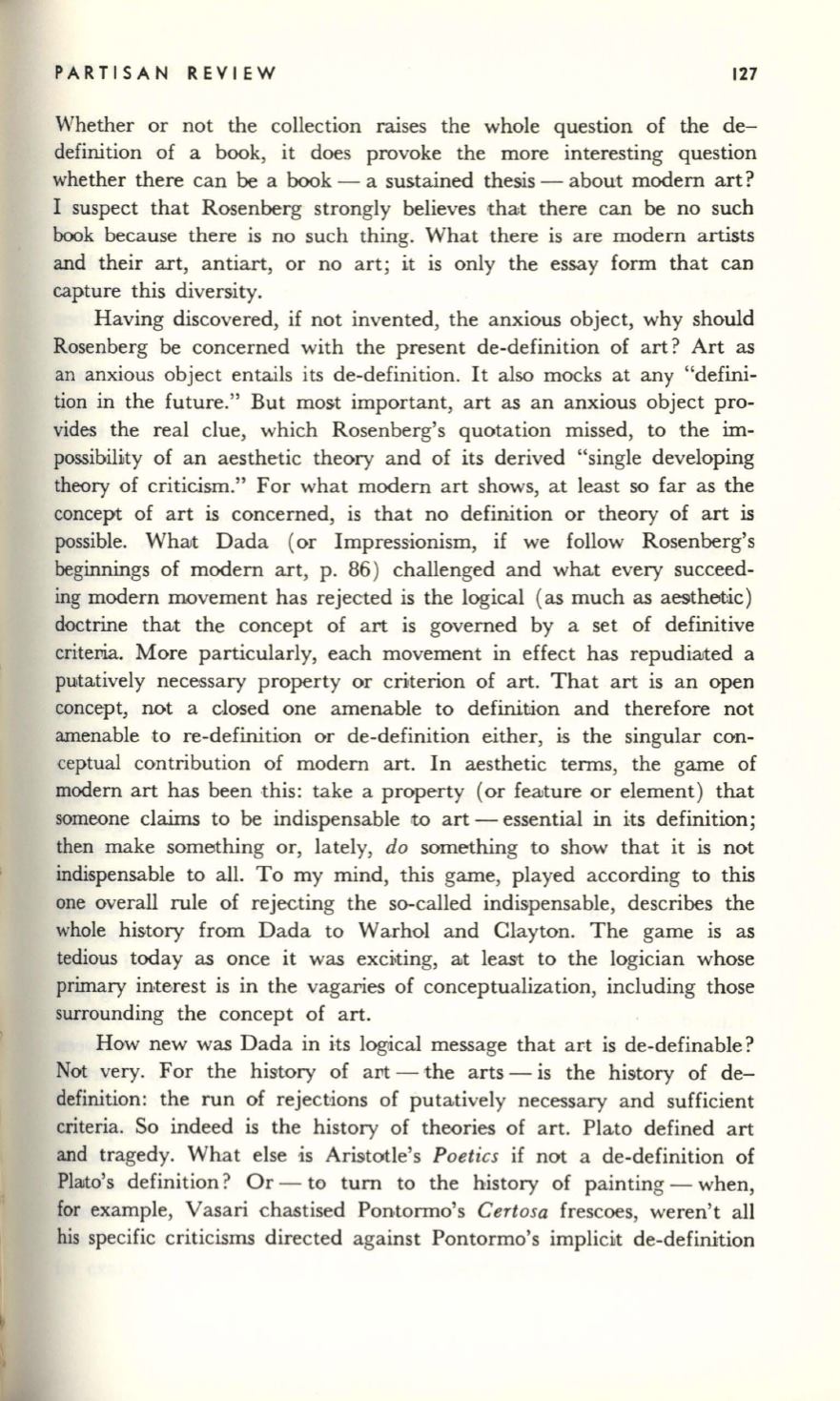
PARTISAN REVIEW
127
Whether or not the collection raises the whole question of the de–
definition of a book, it does provoke the more interesting question
whether there can be a book - a sustained thesis - about modern art?
I suspect that Rosenberg strongly believes that there can be no such
book because there is no such thing. What there is are modern artists
and their art, antiart, or no art; it is only the essay form that can
capture this diversity.
Having discovered, if not invented, the anxious object, why should
Rosenberg be concerned with the present de-definition of art? Art as
an anxious object entails its de-definition. It also mocks at any "defini–
tion in the future." But most important, art as an anxious object pro–
vides the real clue, which Rosenberg's quotation missed, to the
im–
possibility of an aesthetic theory and of its derived "single developing
theory of criticism." For what modern art shows, at least so far as the
concept of art is concerned, is that no definition or theory of art is
possible. WhaJt Dada (or Impressionism, if we follow Rosenberg's
beginnings of modern art, p. 86) challenged and what every succeed–
ing modern movement has rejected is the logical (as much as aesthetic)
doctrine that the concept of art is governed by a set of definitive
criteria. More particularly, each movement in effect has repudiaJted a
putatively necessary property or
cr~terion
of art. That art is an open
concept, not a closed one amenable to definition and therefore not
amenable to re-definition or de-definition either,
is
the singular con–
ceptual contribution of modern art. In aesthetic terms, the game of
modern art has been this: take a property (or feaJture or element) that
someone claims to
be
indispensable
to
art - essential in its definition;
then make something or, lately,
do
something to show that it is not
indispensable to all. To my mind, this game, played according to this
one overall rule of rejecting the so-called indispensable, describes the
whole history from Dada to Warhol and Clayton. The game is as
tedious today as once it was exci,ting,
at
least to the logician whose
primary interest is in the vagaries of conceptualization, including those
surrounding the concept of art.
How new was Dada in its
lo~ical
message that art is de-definable?
Not very. For the history of apt -the arts - is the history of de–
definition: the run of rejeCl!ions of putatively necessary and sufficient
criteria. So indeed is the history of theories of art. Plato defined art
and tragedy. What else is Aristotle's
Poetics
if not a de-definition of
Plalto's definition? Or - to turn to the history of painting - when,
for example, Vasari chastised Pontormo's
Certosa
frescoes, weren't all
his specific criticisms directed against Pontormo's implicit de-definition


